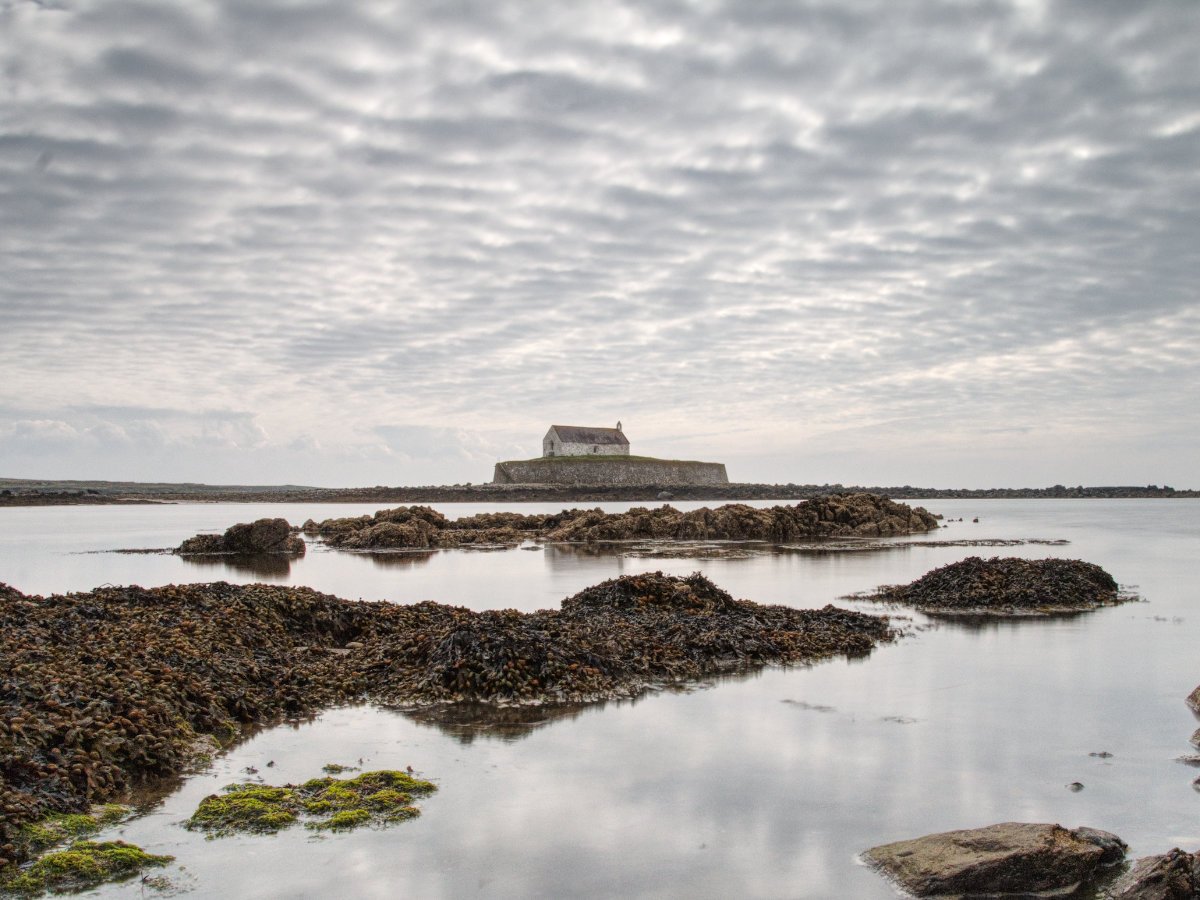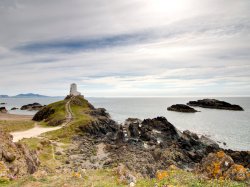It is no doubt that Anglesey is awash with beauty spots that are awe-inspiring and each unquestionably photogenic in their own rights; the island is fairly unique when compared to the mainland with its rugged coastline of cliffs and hard stone that accent its beautiful beaches and attractions. With that, today we are looking at St Cwyfan's Church, or Eglwys Cwyfan, in Llangwyfan - aptly known as Eglwys bach y môr, or the little church in the sea. This is certainly a lovely spot to visit thanks to those beautiful beaches, mostly calm waters thanks to the natural protection of the cliffs and, of course, the rocky causeway leading to the quaint white church atop its little peninsula-turned-island of Cribinau. Even with its Grade II-listed status, the church itself is still in use to this day and has an interesting history we will dive into shortly. So with that let us take a journey onto Anglesey and find the little church in the sea...
Exploring Anglesey is a breeze thanks to the A55 forming the spine of the island's infrastructure and while the church isn't strictly on the roadside it can be considered a 'quick stop' if you find yourself exploring the southern coastline of Anglesey. The most convenient car park is just a short drive away from the A4080, down a reasonably wide country lane that isn't as perilous as the typical Welsh national speed limit lanes thanks to this road being capped at 20 mph. You will be following signs for Trac Môn Anglesey Circuit and can easily navigate by the sounds of engines roaring alone, you will even be within eye-shot of the track entrance by the time we have reached our destination; there is a dedicated lane down to Eglwys Cwyfan but this is a private road, instead, you should drive a little way up from this gated lane and park behind the collection of houses at the Fisherman's car park. This is a grass car park but it is clearly signposted, just be warned at my last visit there was quite a substantial dip in the short lane to the parking that should be taken as slow as possible. You can alternatively take the Aberffraw route to the church, however, if you choose to park in the town itself then the walk is longer than the Anglesey Circuit route and if you drive the lane to get closer you will be on a single-track road with limited passing points, so ultimately the Trac Môn route wins out as the easiest of the options.
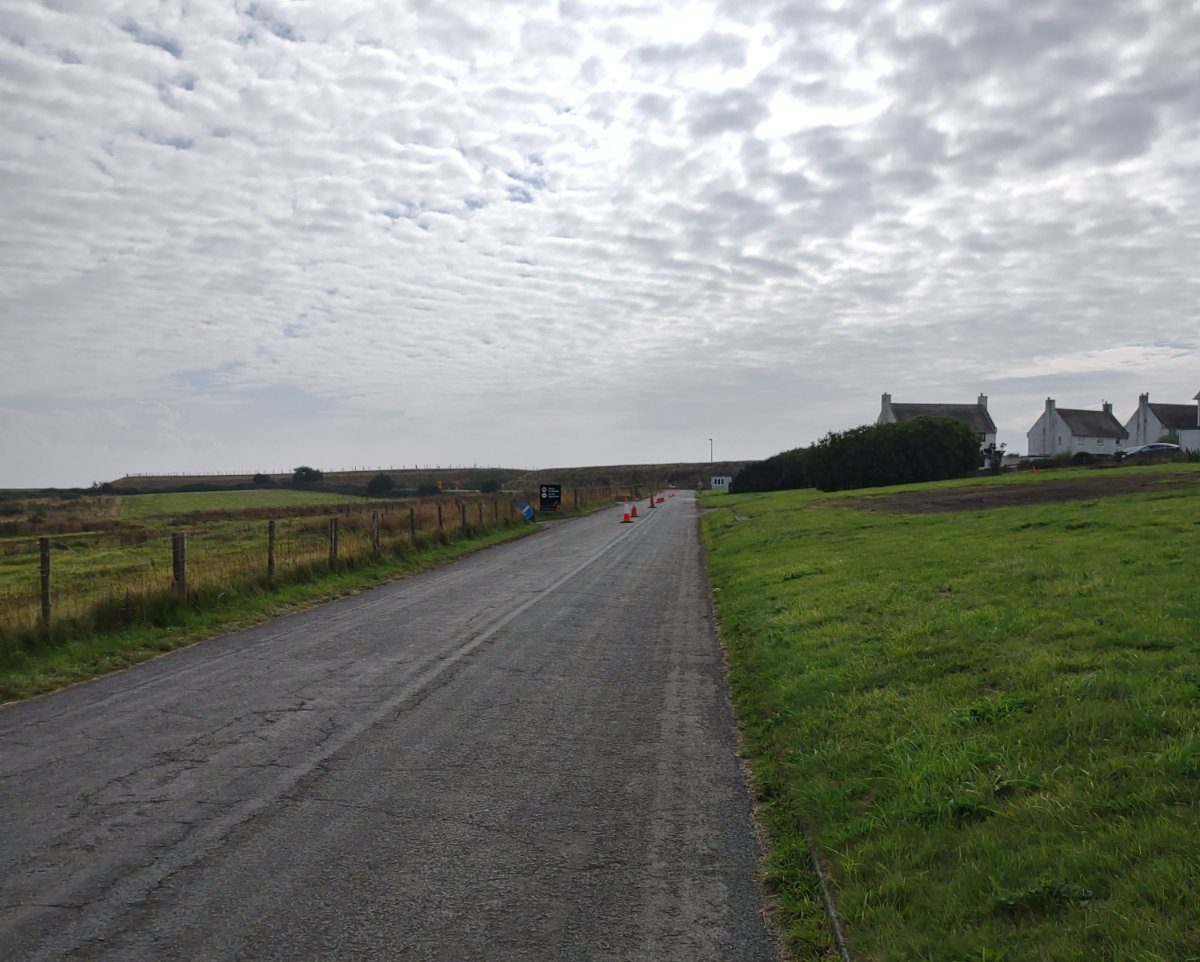
Public transportation in the area is limited and as you would expect nothing will deliver you right to the start of this walk, but with the train stations at Bodorgan or Ty Croes and a bus stop in Aberffraw, you can absolutely make it work with a little planning. If you are planning to walk through from other attractions in the area then be sure to plan before you depart; unlike other areas of Wales, Anglesey's rugged cliffs mean you cannot simply stroll along the beaches and instead will need to follow cliffside walks - always be respectful of private property, especially if you choose a route that takes you near the race track. Combining this with some of the nearby beaches is a great idea of course as Anglesey has some spectacular beaches that should be enjoyed in their own regard!
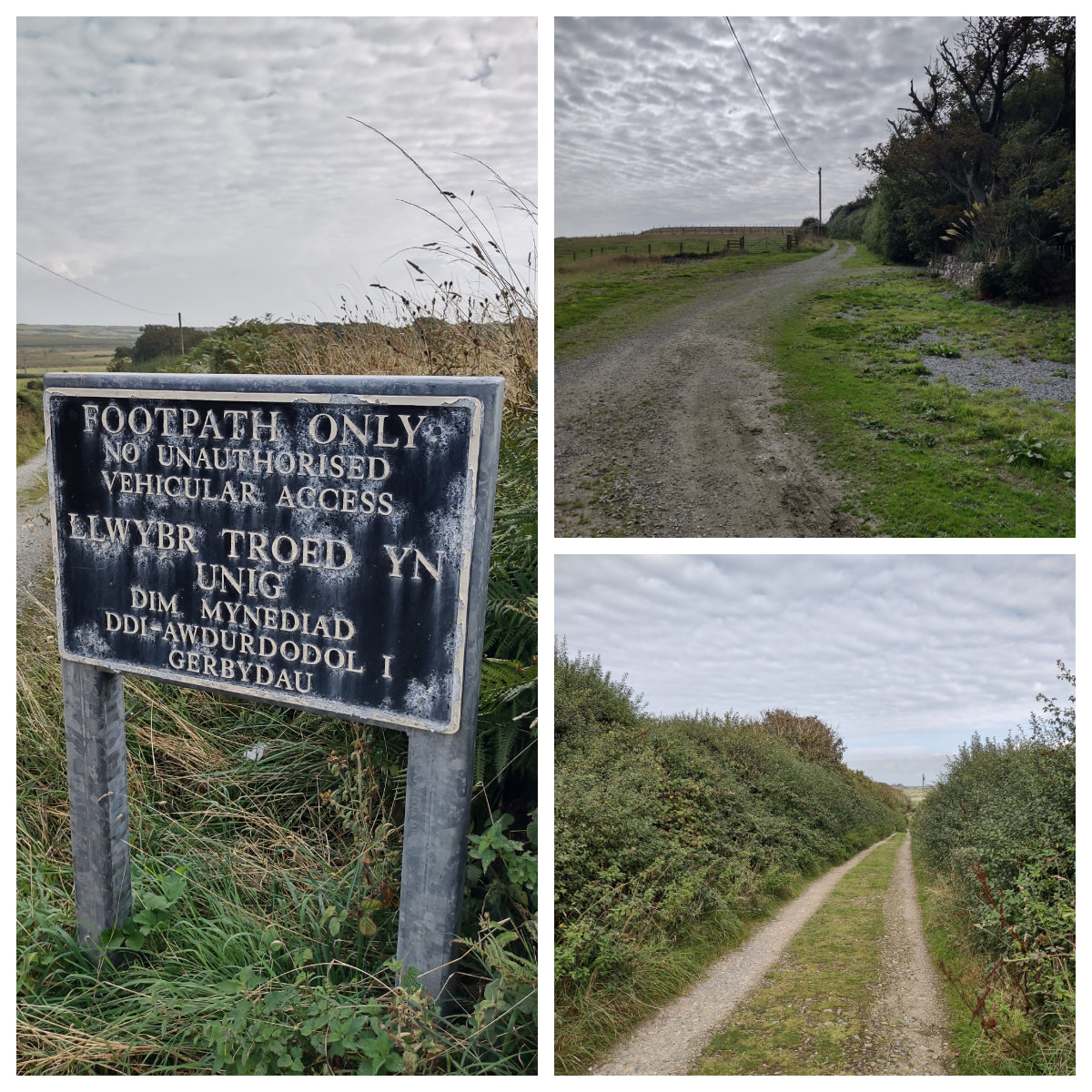
Assuming you have parked at the Fisherman's parking then you need to make your way back up the lane and follow the previously mentioned private lane on foot. The route forwards is an easy-going gravel and sand road surrounded by farmland, with a chorus of both singing birds and screaming engines making for something a little different from normal. It is still a relaxing walk all the same and if you enjoy your cars there are a few sections where you can catch a glimpse of the track and watch the cars go by for a bit. If you don't like racing then don't worry - this is a short walk, under a mile, that will see you reach the church before you know it and while you can still hear the track from the church it certainly is not a dealbreaker. Approaching from the town of Aberffraw is equally simple, if a little longer depending on where you parked, just follow the lanes and be aware of cars as you go.
Once you round the final corner the church is unmissable - it stands out considerably against a backdrop of blue seas (and hopefully blue skies!). The beach has plenty of golden sand that transitions into the tough stone that forms the base of Cribinau island. The beach itself is a great spot in its own right, on the day we visited the ocean was as calm as a millpond and the beach was littered with shells so we enjoyed a bit of time picking through the shells under the shine of the midday sun. It should go without saying that if you've come all this way you should step out onto the island to see the church, but the best views are from the beach so take plenty of time to snap some great photos before embarking down the causeway to explore.
The church itself dates back to the 12th century, where it originally stood at the tip of a peninsula between two bays. As late as 1636 the church can still be seen as attached to the mainland on maps, and written evidence from 1770 in the case against Thomas Bowles (which we will get into momentarily) details the road was in disrepair but does not mention the island being tidal. By the late 19th century portions of the graveyard surrounding the church had fallen to the sea, and the church also had fallen into disrepair; thanks to the action of Harold Hughes, a local architect, funds were raised in 1893 to save the church and construct the seawall around Cribinau as well as restore the church to its former glory. As for the case against Thomas Bowles, this was an incident where Bowles was appointed to the parish by the Bishop of Bangor - the issue stems from the fact that all of the 500 parishioners, excluding 5, spoke exclusively Welsh whereas Bowles spoke exclusively English. The parishioners, obviously unhappy with the language barrier, petitioned against Bowles; while the Dean of Arches ruled that only Welsh speakers should be appointed to Welsh-speaking parishes, Bowles held ecclesiastical freehold which was not removed and remained in place until his death later that same year. Certainly, it was an odd decision to put him into the role, but an interesting piece of the church's history all the same.
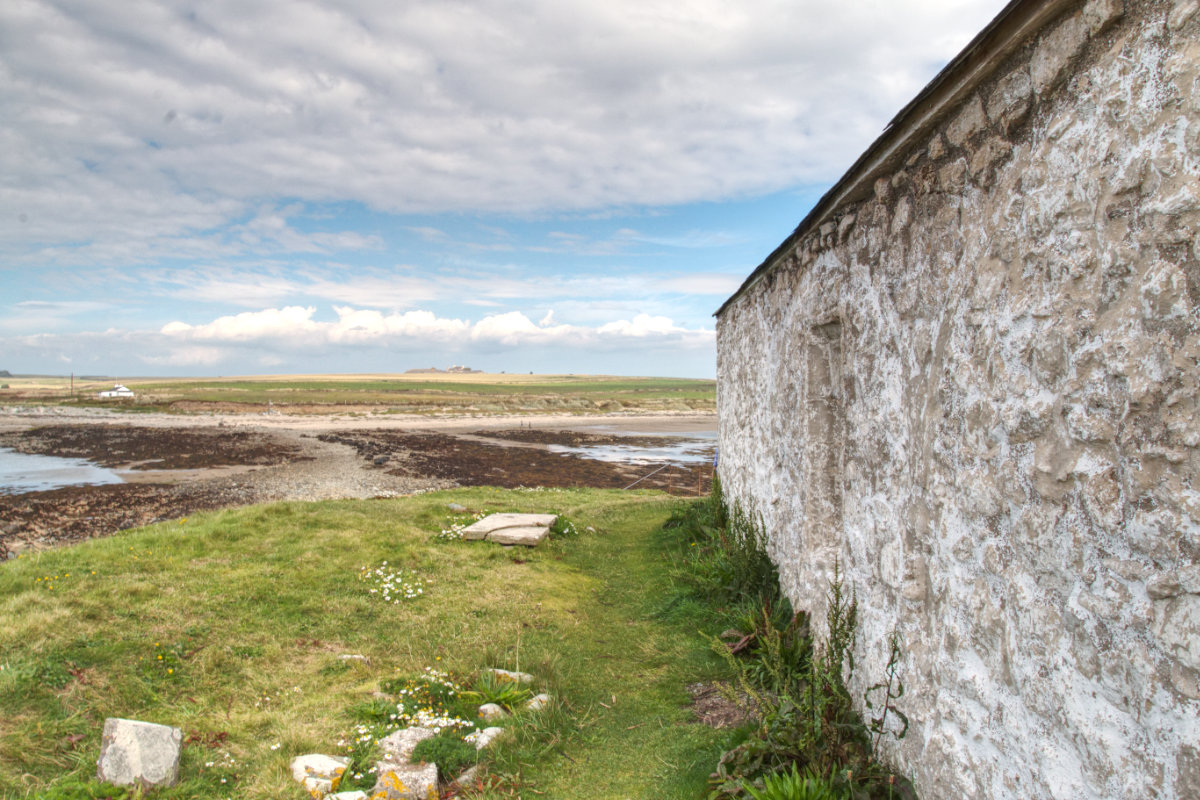
With the history of this tiny island understood, now let us look back to the present as you cross the causeway. The approach to Eglwys Cwyfan is a rough area of stone with one loosely defined path where the rocks are a little less higgledy-piggledy than the rest - you'll have to pick your route a little cautiously but you can explore around the lower part of the island to take a look around the various rock pools and views out to sea. You have probably already established this, but the island becomes inaccessible at high tide so plan your trip accordingly and time it so you don't get yourself stranded. There is a short section of stairs to ascend the sea wall at Cribinau and then you will be on the grass top and free to explore around the church.
While you might be stood on the main attraction at Eglwys Cwyfan, the views from the island are simply phenomenal. Not only can you enjoy a glorious uninterrupted view out into the Irish Sea but out to your left as you ascend the stairs is Snowdonia's looming mountains in all of their glory. The church itself may well be locked, depending on when you visit, but you should still take a break on the grass and enjoy the views beyond - it is such a wonderful place to just exist and enjoy a moment surrounded by the sea, just don't wait too long or you will be wading back to the Anglesey!
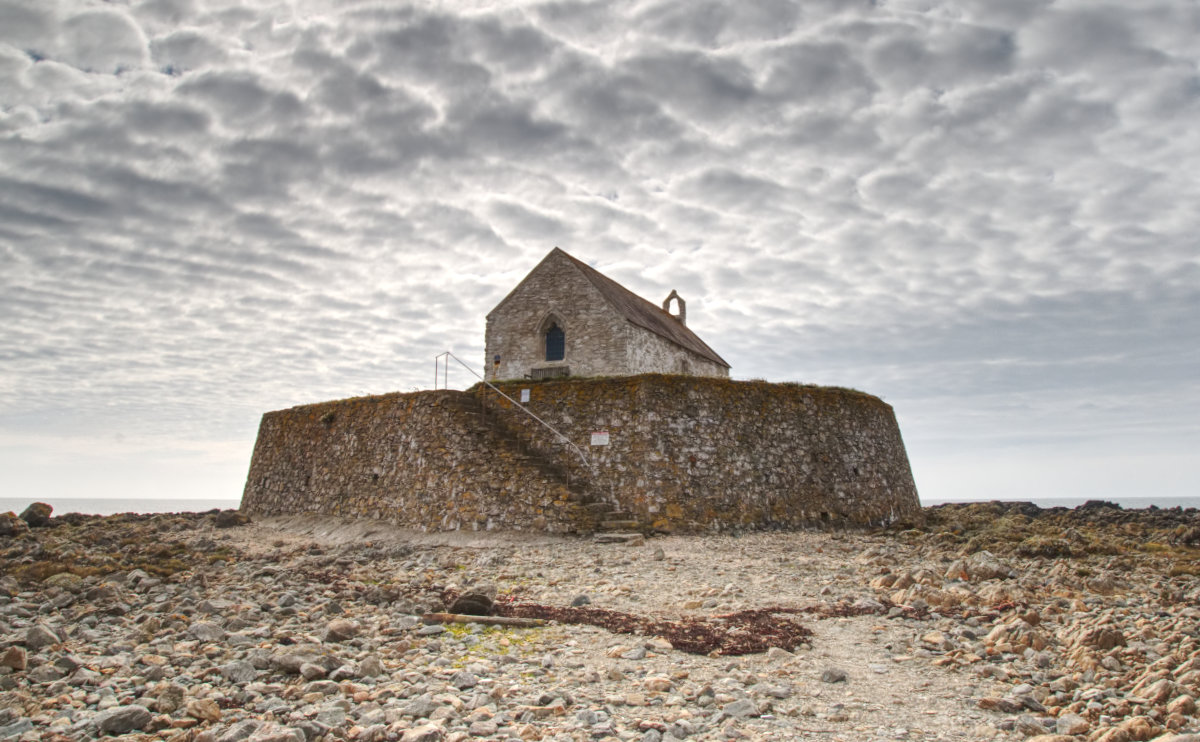
Once you have seen all you need to see of the little church in the sea, you can make your way back over the causeway and retrace your original footsteps to end your day's adventure. While on Anglesey there are plenty of great options within a stone's throw of Eglwys Cwyfan, with my personal pick being the spectacular lighthouses just around the corner at Newborough forest that I discuss in my Lighthouse to Lighthouse article, and if you fancy a bit of a drive to another spectacular island then South Stack Lighthouse is the one for you. If you are planning to do a bit of road tripping then I wholeheartedly recommend a stop off at Beaumaris Castle, a contender for one of the most beautiful castles in all of Wales. I think Eglwys Cwyfan is one of those must-see places in Wales, one of those places that inspires awe and leaves you wondering about all of the things it has seen throughout the year. If you are close by, and maybe even if you aren't, I would still consider making a visit to this beauty spot absolutely essential.
